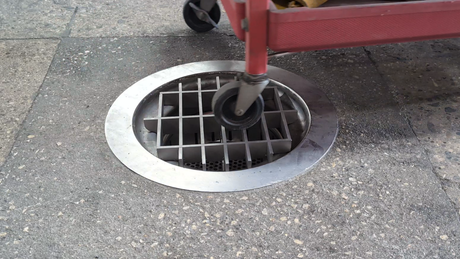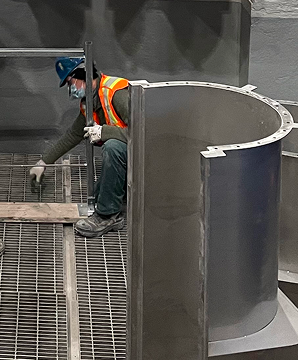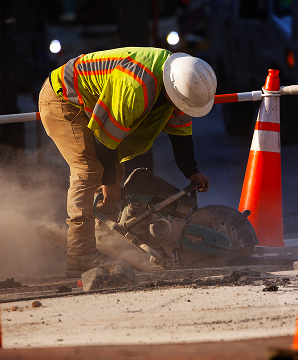The Thinnest Drain on the Market
Our Threshold Drain lets you easily meet the flow rates needed in any building code while maintaining a sleek, nearly invisible look. The 2000 T-Series meets all ADA requirements, while also achieving a 100 GPM flow rate with only 3’ of drain length.
- T316 Stainless Steel Body
- Heelproof Design ADA Compliant
- Narrow Seamless Design
- 100 GPM Flowrate
This drain integrates structurally with the sill plate to offer the thinnest threshold drain on the market. Available with designer grate styles and customizable color schemes this drain mandates both safety and sophistication.
Elevator Drains Collection
Looking to make a bold statement with your elevator design? Global Drain Technologies has collaborated with Gensler serving as product design consultant for our elevator drains collection. This collection features third party tested load rated grates that were designed by architects and certified by engineers.
Angle: Pitching away from the everyday, the Angle grate presents a new aspect of a timeless classic. For those who like to add an understated flair in their design choices. The Angle is ADA compliant and rated at 100 GPM
Weave: Fusing design and manufacturing excellence the Weave features interlaced stainless steel construction that creates a cascading and fractal appearance. For those wanting to stand out with bold design choices. The weave is ADA compliant and rated at 100 GPM.
Flow: Laser cut for lifelike precision, the Flow was inspired by the calming, passive procession of water. This drain fits best with projects inspired by natural materials and earthly tones. The Flow is ADA compliant and rated for 60 GPM.
Available powder coated in a range of colors
What is an Elevator Drain?
Elevator Drains are drains designed to prevent fire suppression water from entering the elevator shaft. This keeps the elevator shaft from filling with water, ensuring the safe operation of emergency elevators during a fire.
Certain jurisdictions now require elevator drains as part of the construction or renovation of buildings greater than 120’. These drains are generally required for Fire Service Access Elevators (FSAEs) and Occupant Access Elevators (OEEs). In New York City, which has been a leader on this life-saving code requirement, drains are required to provide a flow rate of 100GPM per elevator door.
The diversion of fire suppression water is achieved either by placing drains at the threshold of the elevator doors or in the elevator lobby and pitching the floors towards the drain. These methods provide a passive solution to fire suppression water management that succeeds the previous methods of using sump pits and pumps to manage the inflow of water into the elevator shaft.
IAPMO Tested and Certified
Every elevator drain available from Global Drain Technologies has been IAPMO tested and certified. Ensuring the highest level of performance through an anti-cascading design that helps to maintain the safe operation of elevators in emergencies.
Flow rates for elevator drains are mandated in local building codes however, those jurisdictions provide no testing criteria for certifying flow rates for elevator drains. Because of this, a large portion of drainage providers use the testing criteria provided by the International Association of Plumbing and Mechanical Contractors (IAPMO). This criteria is used by local inspectors to certify drainage installed in relevant high-rise buildings.
Durable Stainless Steel Construction
Available in either T304 or T316 stainless steel, Global Drain Technologies elevator drains are durable, functional, and corrosion resistant. Ensuring that they last for the life of the building while requiring minimal upkeep and maintenance.
Structural Integration
Integrating elevator drains into the link beam and post tension designs found in modern high-rise design can present adoption challenges for engineers who are new to the requirements of local elevator regulations.
Global Drain Technologies commissioned Dalessio Engineering to provide a whitepaper detailing conditions and requirements that engineers can use to meet both code requirements for while maintaining the structural integrity of the elevator sill plate.To learn more about our engineering whitepaper, please reach out to your territory sales representative.
Saving Lives Beyond the Code
Even if you do not live in a region currently affected by these code requirements, it is important to start planning for them. Elevator drain requirements are a reality in both New York and California and are expected to spread to other major metropolitan areas across North America..
Elevator drains provide an opportunity to plan for the safe evacuation of and access to buildings in an emergency. This solution surpasses outdated historical methods of managing fire suppression water, like sump pits and pumps. Elevator drains are a passive solution that can future proof buildings and help to save lives.





